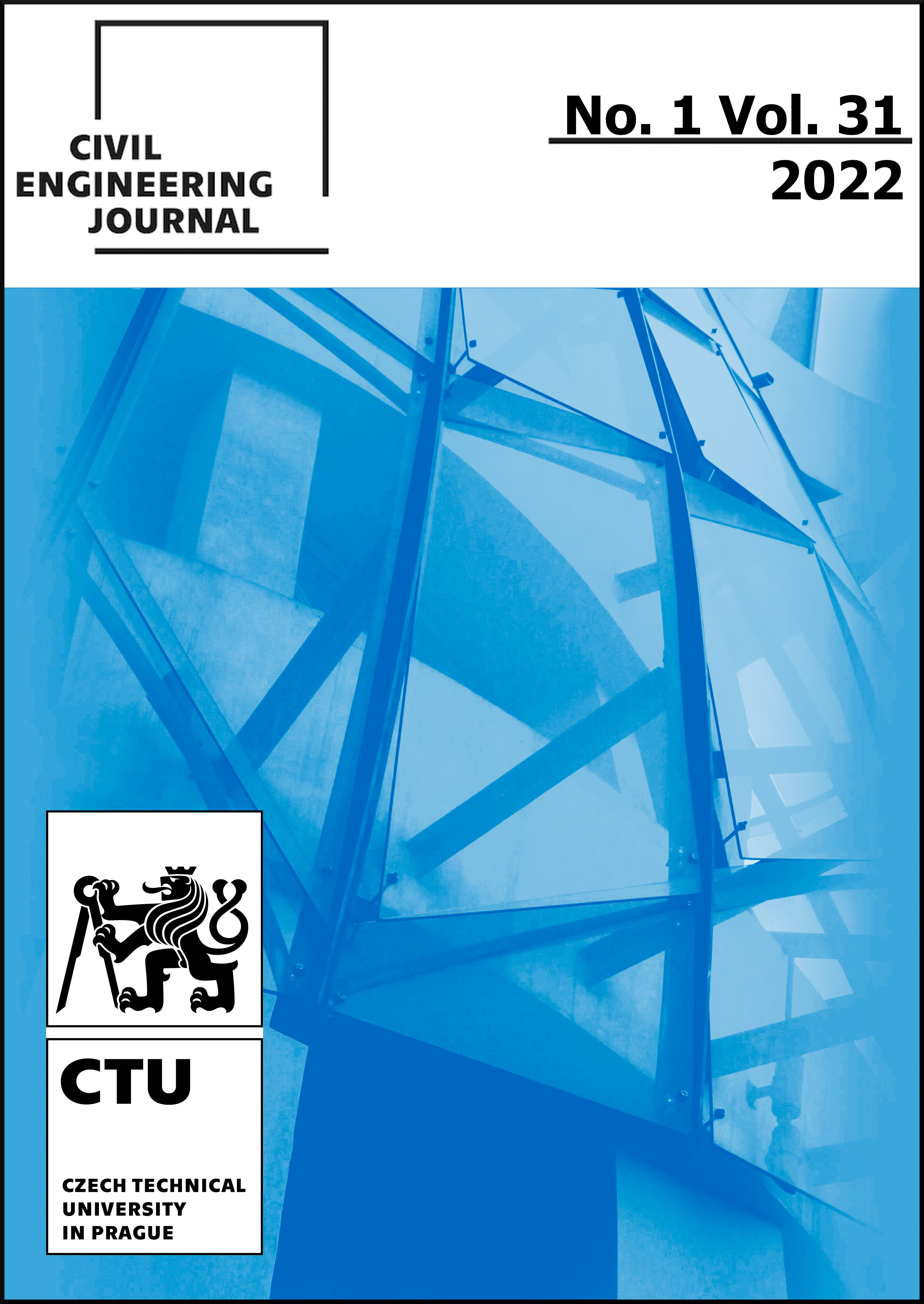UBLOX F9P FOR GEODETIC MEASUREMENT
DOI:
https://doi.org/10.14311/CEJ.2022.01.0009Keywords:
Low-cost device, GNSS, Ublox, Raspberry PI, GSM moduleAbstract
This article brings knowledge of the settings of the Ublox ZED-F9P device, which will allow to use this receiver to build-up a simple low-cost GNSS device. The settings for the rover and base station functions are different and need to be done very accurately. Next we present a wiring scheme of the Ublox receiver with the Arduino system which as a whole device will enable the full functionality of the GNSS receiver as it is known from commonly used commercial devices. Ublox receiver was tested on accuracy and solution stability, results are shown in the article. At our department we create devices usable for teaching students as users or developers.
Downloads
References
Hamza,V. Testing Multi-Frequency Low-Cost GNSS Receivers for Geodetic Monitoring Purposes.Sensors2622020,20, 4375.
Lu,L. Performance Analysis of Positioning Solution Using Low-Cost Single-Frequency U-Blox Receiver264Based on Baseline LengthSensors2019,19, 4352.
Rover, S.; Vitti, A. GNSS-R with Low-Cost Receivers for Retrieval of Antenna Height from Snow Surfaces266Using Single-Frequency ObservationSensors2019,19, 553.
Research and Implementation of Dual-Frequency Precise Point Position Based on U-blox F9PDOI:26810.1109/ICCCS49078.2020.9118607
Feng, X.; Zhang, T.; Lin, T.; Tang, H.; Niu, X. Implementation and Performance of a Deeply-Coupled GNSS279Receiver with Low-Cost MEMS Inertial Sensors for Vehicle Urban Navigation Sensors 2020, 20, 3397.
Wielgocka, N.; Hadas, T.; Kaczmarek, A.; Marut, G. Feasibility of Using Low-Cost Dual-Frequency GNSS Receivers for Land Surveying. Sensors 2021, 21, 1956. https://doi.org/10.3390/s21061956
Hamza, V.; Stopar, B.; Sterle, O. Testing the Performance of Multi-Frequency Low-Cost GNSS Receivers and Antennas. Sensors 2021, 21, 2029. https://doi.org/10.3390/s21062029
Cina, A.; Piras, M. Performance of Low-Cost GNSS Receiver for Landslides Monitoring: Test and Results. Geomat. Nat. Hazards Risk 2015, 6, 497–514.
Jackson, J.; Davis, B.; Gebre-Egziabher, D. A Performance Assessment of Low-Cost RTK GNSS Receivers. In Proceedings of the 2018 IEEE/ION Position, Location and Navigation Symposium (PLANS), Monterey, CA, USA, 23–26 April 2018; pp. 642–649.
Semler, Q.; Mangin, L.; Moussaoui, A.; Semin, E. Development of a Low-Cost Centimetric GNSS Solution for Android Apllications. Int. Arch. Photogramm. Remote Sens. Spat. Inf. Sci. 2019, XLII-2/W17, 309–314.
Günter, J.; Heunecke, O.; Pink, S.; Schuhbäck, S. Developments towards a low-cost GNSS based sensor network for the monitoring of landslides. In Proceedings of the 13th FIG International Symposium on Deformation Measurements and Analysis, Lisbon, Portugal, 12–15 May 2008.
Mahato, S.; Shaw, G.; Santra, A.; Dan, S.; Kundu, S.; Bose, A. Low Cost GNSS Receiver RTK Performance in Forest Environment. In Proceedings of the 2020 URSI Regional Conference on Radio Science (URSI-RCRS), Varanasi, India, 12–14 February 2020; pp. 1–4.
Lyu, Z.; Gao, Y. An SVM Based Weight Scheme for Improving Kinematic GNSS Positioning Accuracy with Low-Cost GNSS Receiver in Urban Environments. Sensors 2020, 20, 7265. https://doi.org/10.3390/s20247265
Elmezayen, A.; El-Rabbany, A. Ultra-Low-Cost Tightly Coupled Triple-Constellation GNSS PPP/MEMS-Based INS Integration for Land Vehicular Applications. Geomatics 2021, 1, 258-286. https://doi.org/10.3390/geomatics1020015
X. Dong and W. Chen, "Research and Implementation of Dual-Frequency Precise Point Position Based on U-blox F9P," 2020 5th International Conference on Computer and Communication Systems (ICCCS), 2020, pp. 604-608, doi: 10.1109/ICCCS49078.2020.9118607.
Sikola,J. Testing GNSS module Ublox 9 generation, Master’s Thesis,2020,http://hdl.handle.net/10467/88561
Hodik,S. Development of low-cost GNSS device, Master’s Thesis, 2019,http://hdl.handle.net/10467/83537
Downloads
Published
Issue
Section
License
Copyright (c) 2022 Stavební obzor - Civil Engineering Journal

This work is licensed under a Creative Commons Attribution-NonCommercial 4.0 International License.
Authors who publish with this journal agree to the following terms:
- Authors retain copyright and grant the journal right of first publication with the work simultaneously licensed under a Creative Commons Attribution License that allows others to share the work with an acknowledgement of the work's authorship and initial publication in this journal.
- Authors are able to enter into separate, additional contractual arrangements for the non-exclusive distribution of the journal's published version of the work (e.g., post it to an institutional repository or publish it in a book), with an acknowledgement of its initial publication in this journal.
- Authors are permitted and encouraged to post their work online (e.g., in institutional repositories or on their website) prior to and during the submission process, as it can lead to productive exchanges, as well as earlier and greater citation of published work (See The Effect of Open Access).
How to Cite
Accepted 2022-03-29
Published 2022-04-30










